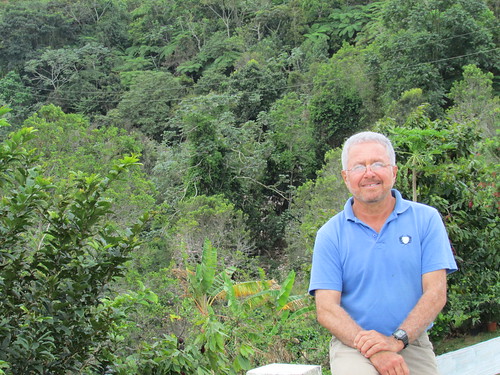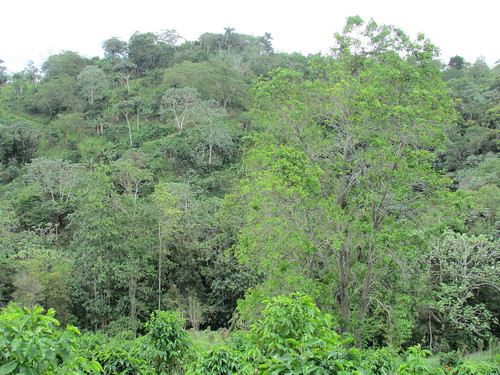
Through USDA Farm Service Agency’s Conservation Reserve Program (CRP), Puerto Rico’s Moises Velez-Santiago has protected his farm’s watershed, improved water quality and enhanced wildlife habitat.
Moises Velez-Santiago understands the important role farming can play in protecting water quality for Puerto Rico’s 3.5 million residents. He’s been farming on the island nearly three decades.
Through the USDA Farm Service Agency’s (FSA) Conservation Reserve Program (CRP), Velez-Santiago has strived to obtain a balance of environmental conservation and crop production.
“As a farmer, I have a great responsibility to produce healthy food and at the same time care for and protect the valuable resources of soil, air and water,” he said. “CRP provides me with all the benefits to protect the environment, maintain natural resources and improve water quality.”
He has been working the land on his current 58-acre farm for 28 years where he grows and cultivates coffee, plantains and oranges.
Seventeen years ago, Velez-Santiago learned about CRP and enrolled 10 acres of his farming operation because he saw the program as a great way to protect his farm’s watershed, improve water quality and conserve wildlife habitat.
Velez-Santiago re-enrolled the CRP acreage on his farm five years ago in an effort to conserve natural resources on his farm. In addition, his CRP acres improve the water quality of three municipalities that receive water from the river that passes through his farm. The river is also a tributary to the north coast of Puerto Rico.
Through CRP, farmers and ranchers plant grasses and trees in fields and along streams or rivers. These riparian buffers prevent soil and nutrients from washing into waterways, reduce soil erosion that may otherwise contribute to poor air and water quality, and provide valuable habitat for wildlife.
As part of Velez-Santiago’s CRP practices, he planted and maintains hundreds of mixed hardwood trees including mahogany, cedar, mahoe, eucalyptus, oak and maga.
Velez-Santiago is very proud of his farm and the environmental and crop-production successes he realized thanks to CRP.
Since December 1985, CRP has helped prevent more than 9 billion tons of soil from eroding and protected more than 170,000 stream miles with riparian and grass buffers, more than 100,000 acres of bottomland hardwood trees, nearly 300,000 acres of flood-plain wetlands, and 250,000 acres each for duck nesting habitat and upland bird habitat.
CRP, one of the largest private lands conservation initiatives, is a voluntary program that allows eligible landowners to receive annual rental payments and cost-share assistance to establish long-term, resource-conserving covers on eligible farmland throughout the duration of their 10-to-15-year contracts.
To find your local USDA Service Center, please visit http://offices.usda.gov.

Moises Velez-Santiago planted and maintains hundreds of mixed hardwood trees through USDA Farm Service Agency’s Conservation Reserve Program (CRP). His tree plantings help to improve the water quality of three municipalities that receive water from the river that passes through his farm. The river is also a tributary to the north coast of Puerto Rico.
No comments:
Post a Comment
Note: Only a member of this blog may post a comment.